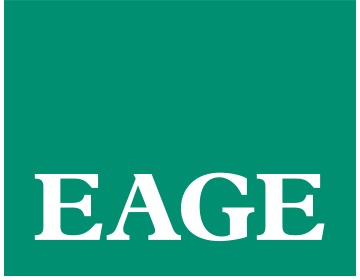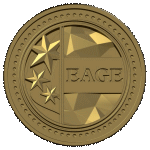Artificial intelligence and machine learning have developed at an incredible pace in the recent years. As a group of EAGE members and volunteers we aim to help find the bits relevant for geoscientists.
You can join EAGE or renew your membership to support the work of the EAGE A.I. Community and access a world of benefits.
EAGE Membership Benefits: Join or Renew
![]()
![]() What: YouTube channel about AI/ML in Oil and Gas. The channel was established by an experienced AI/ML developer who has organized and launched many successful AI products. This educational/conversational channel features curated reviews of recent AI/ML publications, AI interviews, fundamental AI/ML concept explanations, and the latest news about AI-related conferences and gatherings (hackathons, etc.).
What: YouTube channel about AI/ML in Oil and Gas. The channel was established by an experienced AI/ML developer who has organized and launched many successful AI products. This educational/conversational channel features curated reviews of recent AI/ML publications, AI interviews, fundamental AI/ML concept explanations, and the latest news about AI-related conferences and gatherings (hackathons, etc.).
![]() Why this is useful: Information regarding machine learning development in oil and gas is dispersed throughout numerous publications, blog posts, and snippets of information here and there. It’s lovely to have everything in one channel. It also makes an effort to create materials that are easy to understand and free of complex mathematical calculations.
Why this is useful: Information regarding machine learning development in oil and gas is dispersed throughout numerous publications, blog posts, and snippets of information here and there. It’s lovely to have everything in one channel. It also makes an effort to create materials that are easy to understand and free of complex mathematical calculations. Ruslan Miftakhov – AI Applications
Ruslan Miftakhov – AI Applications
![]()
![]() What: The Groningen gas field, the Netherlands. Utrecht University released an open-source dataset of the onshore Groningen gas fields with faulting and a massive salt body. The dataset contains reservoir model, cultural data, seismic interpretation, seismic volume, fault model, well-logs, etc. [Part of the data comes as a Petrel 2018 project.]
What: The Groningen gas field, the Netherlands. Utrecht University released an open-source dataset of the onshore Groningen gas fields with faulting and a massive salt body. The dataset contains reservoir model, cultural data, seismic interpretation, seismic volume, fault model, well-logs, etc. [Part of the data comes as a Petrel 2018 project.]
![]() Why this is useful:We don’t have enough labeled data to experiment with and design better practical solutions. This dataset is unique because it includes an interpretation, which is a very rare occurrence.
Why this is useful:We don’t have enough labeled data to experiment with and design better practical solutions. This dataset is unique because it includes an interpretation, which is a very rare occurrence.

NAM (2020). Petrel geological model of the Groningen gas field, the Netherlands. Open access through EPOS-NL.
![]()
![]() What: Deep Learning Tutorials for Seismic Interpretation using Python. Check out Thilo Wrona’s GitHub repository seismic_deep_learning if you want to get started with deep learning for seismic interpretation. It includes nine tutorials on using Deep Learning for salt detection, fault delineation, and horizont tracking.
What: Deep Learning Tutorials for Seismic Interpretation using Python. Check out Thilo Wrona’s GitHub repository seismic_deep_learning if you want to get started with deep learning for seismic interpretation. It includes nine tutorials on using Deep Learning for salt detection, fault delineation, and horizont tracking.
![]() Why this is useful:Many datasets and tutorials are available online to help you get started with machine learning and deep learning, but almost all of them are tied to some distant field hands-on examples. It would be better for geoscientists to learn and apply their knowledge to relevant problems in the geoscience domain.
Why this is useful:Many datasets and tutorials are available online to help you get started with machine learning and deep learning, but almost all of them are tied to some distant field hands-on examples. It would be better for geoscientists to learn and apply their knowledge to relevant problems in the geoscience domain.
![]()
![]() What: “Deep convolutional neural network for automatic fault recognition from 3D seismic datasets.” Yu An and colleagues published interesting research that challenges the concept that fault detection is a segmentation problem in Deep Learning. It compares Holistic Edge Detection and Richer Convolutional Features to the current state-of-the-art segmentation architecture. Along with the architecture comparison, the authors offer some insight into which augmentation, patch reconstruction, and annotation step size are the most effective.
What: “Deep convolutional neural network for automatic fault recognition from 3D seismic datasets.” Yu An and colleagues published interesting research that challenges the concept that fault detection is a segmentation problem in Deep Learning. It compares Holistic Edge Detection and Richer Convolutional Features to the current state-of-the-art segmentation architecture. Along with the architecture comparison, the authors offer some insight into which augmentation, patch reconstruction, and annotation step size are the most effective.
![]() Why this is useful: It introduces a new way of thinking about fault delineation in Deep Learning as an edge detection problem. It includes GitHub code as well as a labeled dataset on Google Drive.
Why this is useful: It introduces a new way of thinking about fault delineation in Deep Learning as an edge detection problem. It includes GitHub code as well as a labeled dataset on Google Drive.

Yu An, Jiulin Guo, Qing Ye, Conrad Childs, John Walsh, Ruihai Dong, Deep convolutional neural network for automatic fault recognition from 3D seismic datasets, Computers & Geosciences, Volume 153, 2021, 104776, ISSN 0098-3004, https://doi.org/10.1016/j.cageo.2021.104776.
![]()
![]() What: Google Machine Learning Crash Course. Quality content for 15 hours; A sequence of modules featuring video lectures, real-world case studies, and hands-on practical exercises are included in the Machine Learning Course. It walks the listener through the entire process, from identifying a problem to predicting using Tensorflow APIs. If you have little or no ML background or surface-level understanding, then this course is right for you.
What: Google Machine Learning Crash Course. Quality content for 15 hours; A sequence of modules featuring video lectures, real-world case studies, and hands-on practical exercises are included in the Machine Learning Course. It walks the listener through the entire process, from identifying a problem to predicting using Tensorflow APIs. If you have little or no ML background or surface-level understanding, then this course is right for you.
![]() Why this is useful:The course is designed with a practical approach in mind and is taught by Google Researchers in a structured manner. When the sections are completed in order, the flow of the content makes it easier to understand them. Starting with loss and gradient descent, work your way up to classification models and deep neural nets. It’s worth noting that the playground exercises are excellent, assisting with the visualization and comprehension of the ML concepts.
Why this is useful:The course is designed with a practical approach in mind and is taught by Google Researchers in a structured manner. When the sections are completed in order, the flow of the content makes it easier to understand them. Starting with loss and gradient descent, work your way up to classification models and deep neural nets. It’s worth noting that the playground exercises are excellent, assisting with the visualization and comprehension of the ML concepts.
![]()
Discover EAGE Learning Resources on A.I. and machine learning
This newsletter is edited by the EAGE A.I. Committee.
| Name | Company / Institution | Country |
|---|---|---|
| Anna Dubovik | WAIW | United Arab Emirates |
| Jan H. van de Mortel | Independent | Netherlands |
| Jing Sun | TU Delft | Netherlands |
| Julio Cárdenas | Géolithe | France |
| George Ghon | Capgemini | Norway |
| Lukas Mosser | Aker BP | Norway |
| Oleg Ovcharenko | NVIDIA | United Arab Emirates |
| Nicole Grobys | DGMK | Germany |
| Roderick Perez | OMV | Austria |
| Surender Manral | Schlumberger | Norway |
| Yohanes Nuwara | Aker BP | Norway |






